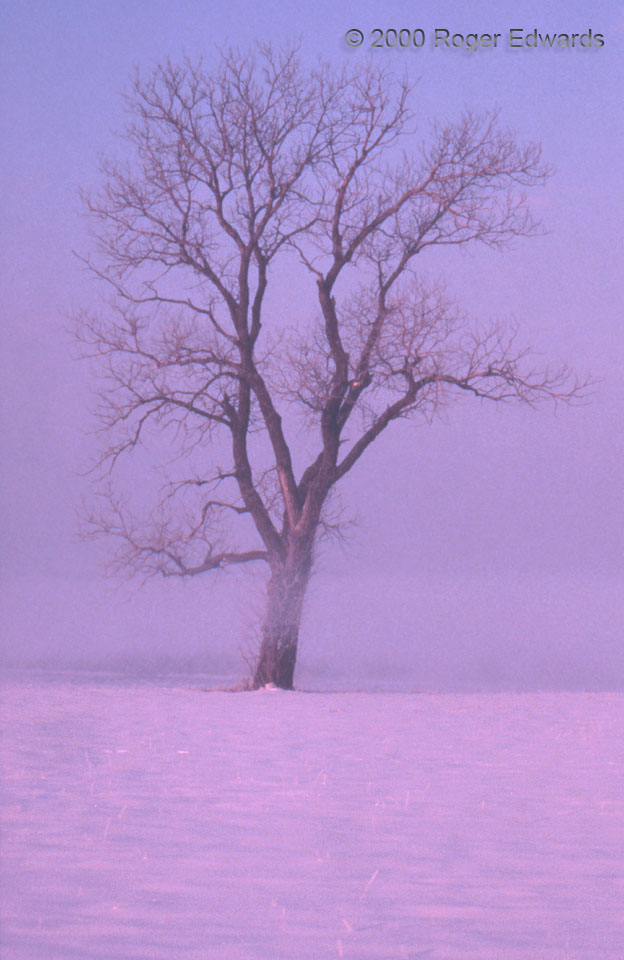
A single, weather-worn old elm tree stood tall: a lonely sentinel amidst the desolate chill of the snowy prairie. The ground fog of sunrise hung low over winter’s blanket, casting a hint of eerie mystery across frigid stillness. What if the tree could talk? Its stories would put to shame those of even the most grizzled old human weather observer. A violent tornado passed over this spot in 1949, 51 years before I shot the film slide; somehow this tree—then young and flexible—survived the onslaught. It stood firm in blistering droughts with 100-degree air temperatures, where the red clay soil baked so dry as to split apart with deep fissures. Living on a flat pan with poor drainage, it resisted rot in times of flood, when foot-deep standing water left its roots choked in mud. The tallest object for hundreds of yards around, this tree probably took more than its fair share of lightning strikes. It lost a few limbs in the occasional ice storm, and leaned hard against severe downbursts in the early 1990s. Today it still stands as a meteorological “Survivor Tree”, a brisk walk southwest of the old Doppler antenna on the North Campus of OU.
Norman, OK (30 Jan 0) Looking W
35.2358, -97.4653